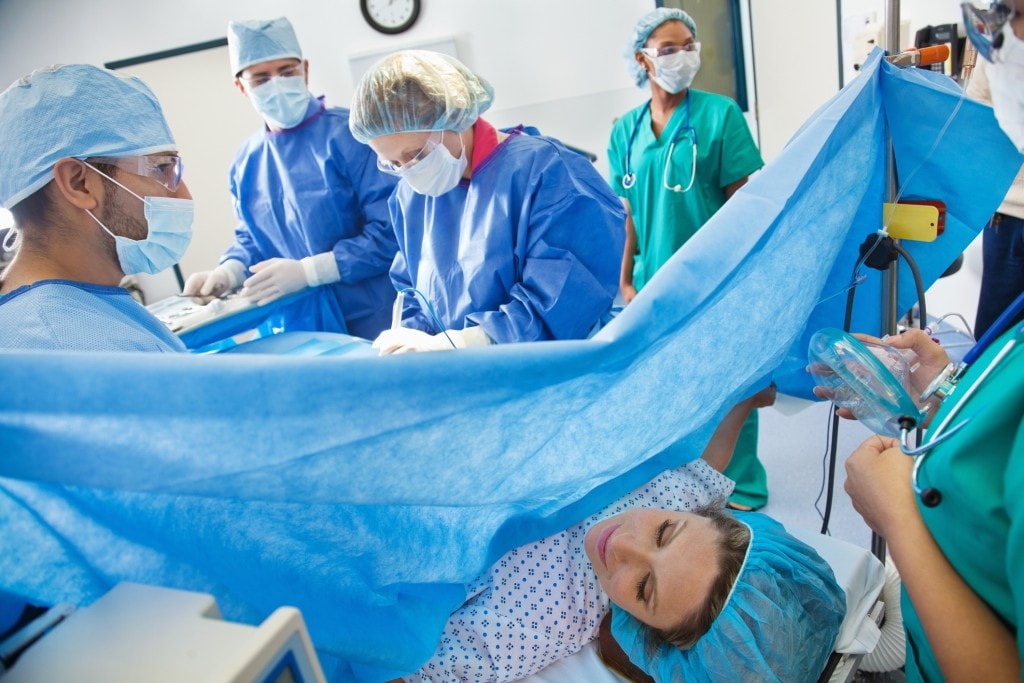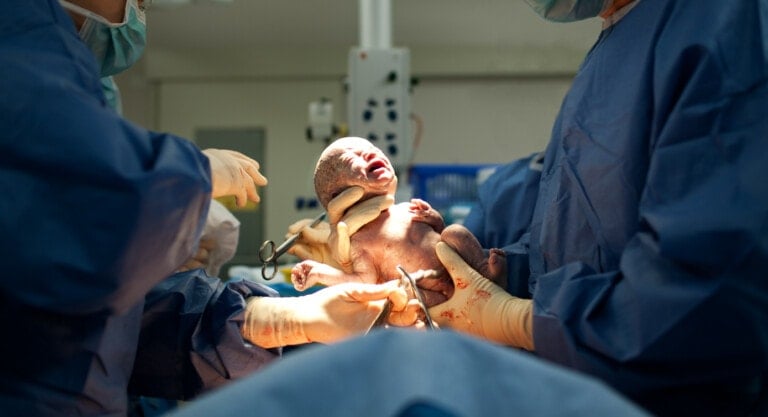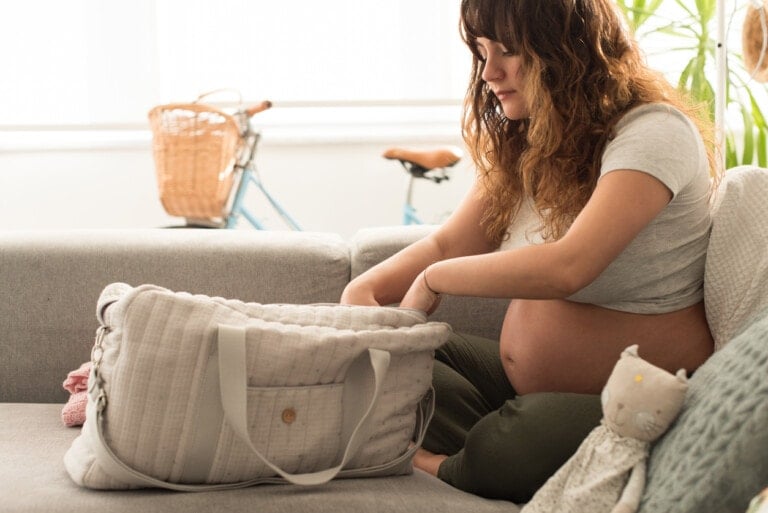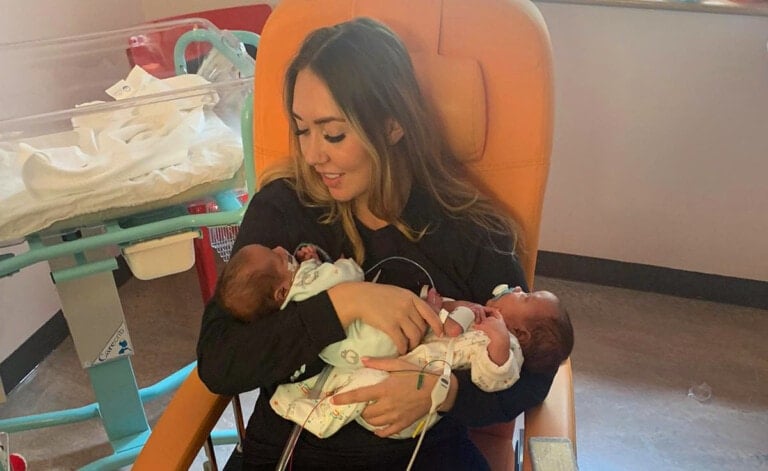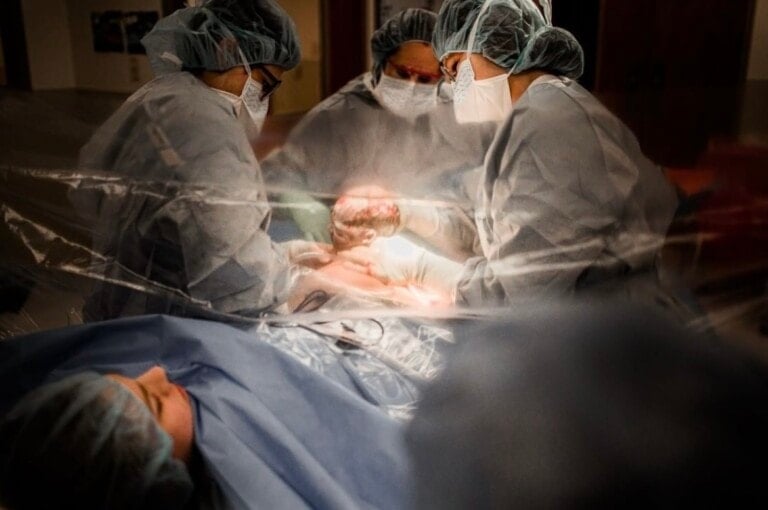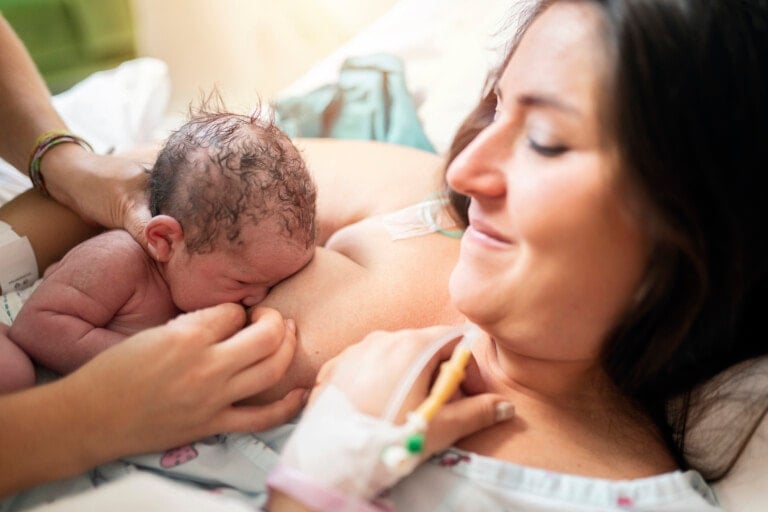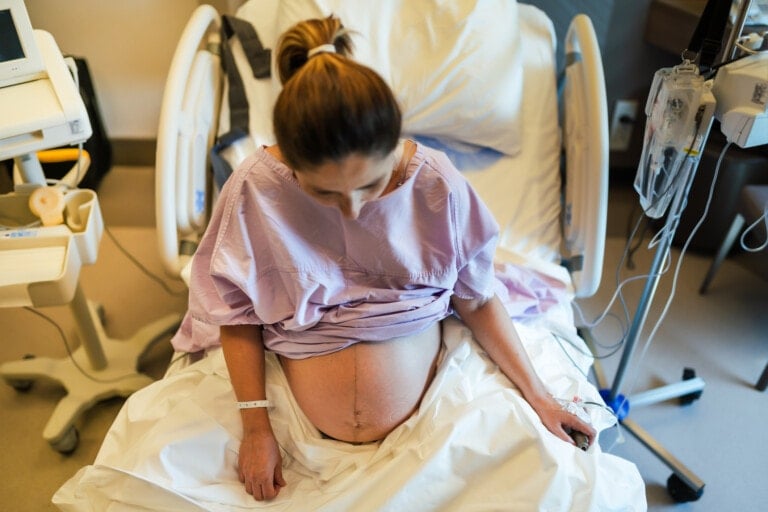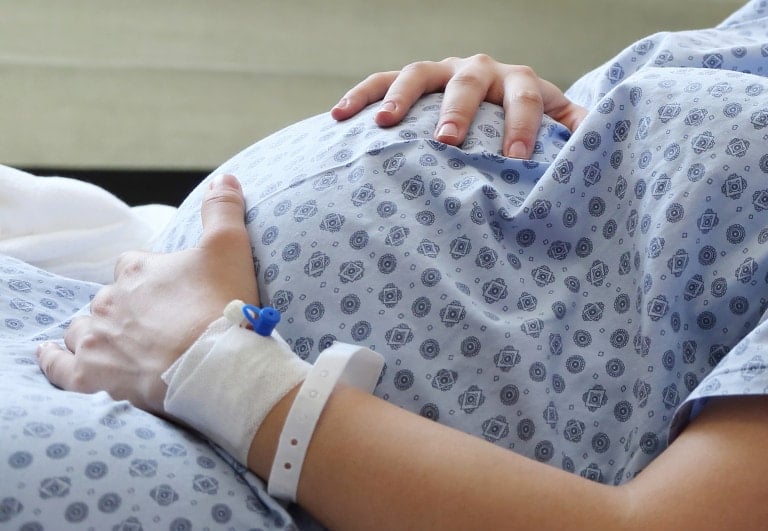I once heard a woman say that another woman’s choice to have an elective C-section was the “easy way out.” And while I can understand her point of view, I think it’s flawed. Whether you choose to have a C-section or your doctor decides it for you, it’s certainly not an easy way to have a baby.
C-sections have become easier—for doctors.
When it comes to delivering a baby, cesareans are the easy way out – for doctors. In the past, cesareans were reserved as a life-saving procedure when things went awry with a vaginal delivery. It was also used when a baby was too large to be delivered vaginally. However, they have become much more common in recent years.
About 32% of all deliveries in the United States occur by C-section. In some countries (especially Latin America and the Caribbean), more than half of all births are by cesarean.1,2 Why the dramatic increase in the rate of C-sections? Doctors (as well as hospitals) receive more money for a C-section, reduce the likelihood of being sued, and are quicker than vaginal delivery.3 They are also more convenient since they can be scheduled.
Some women choose to have a C-section, but few realize the risks.
There are several reasons some women may choose a C-section over vaginal birth. Some women may prefer a cesarean when given the option. Some mothers may choose a C-section because of the convenience of scheduling their delivery. Others may do so out of fear of labor. The trend is alarming, however, because there is always risk involved with major surgery. There is an increased risk of infection and heavy postpartum bleeding after a C-section. Breastfeeding rates are also lower for women who have cesareans.4
First-time moms or moms who deliver vaginally often do not realize what is involved with a C-section. I know I didn’t. While your spouse is prepping for entry to the operating room, you’re wheeled into a cold, sterile operating room, often after going through much, if not all, of labor. You have to receive an epidural, which can be pretty painful. It helps if the anesthesiologist or nurse anesthetist is skilled. With my daughter’s delivery, I was stuck three times before they found the right spot to do the spinal.
They insert a catheter and sometimes strap you down to a table (because they have blood pressure cuffs and other monitors on you). It is common to be nauseous and even vomit on the operating table. Many women find that the spinal makes them sleepy or groggy during the procedure. A curtain will be placed across you so you cannot see the procedure. Your spouse will not enter the operating room until right before the procedure or after it has begun. While you can see and hear your baby after the delivery, you will not be able to hold your baby until later because your doctor will still have to close the incisions and finish the surgical procedure.
What is it like to recover from a cesarean?
For about one to two weeks after, it feels like everything inside you is ripping apart every time you move. The pain can often bring you to tears. Couple this with the uterine cramps from nursing, and you get pain in the same area. It’s not fun.
Of course, recovery from each C-section is different. Recovering from my first C-section was considerably more challenging than my second or third. You lose feeling each time you have a C-section because nerves are severed. After your first C-section, all the nerves are fresh (and my 22-year-old muscles were also in a bit better shape!), so the pain is more astute. However, my fourth C-section was also difficult to recover from because I quickly had to resume my everyday duties of caring for my three older children. When you lack ample time to heal, recovery is difficult.
Let me be clear: I have no idea what it’s like to recover from vaginal birth. I do not mean to downplay in any way the recovery from that. No matter how you deliver, you are expelling another human being from your body, which will be difficult to heal from. I just want to be honest that when women have cesareans, it is not because they are easy.
Can you prevent having a C-section?
If you are currently expecting, there are things you can do now to help prevent a C-section. First, carefully choose your hospital (or place of delivery) and healthcare provider. Find out what their rate of cesarean delivery is. Staying at home during early labor can help since many hospitals limit your movement during labor (due to monitors and IVs) once you have been admitted. Using a midwife or doula can also decrease your chances of needing a C-section.5 Chiropractic care during pregnancy can help reduce the chances of needing a cesarean because regular adjustments keep your pelvis appropriately aligned.
The essential thing about delivery is that both mom and baby are healthy when it comes down to it. Do what you can to have a vaginal delivery, but do not think less of yourself if you need a cesarean. Whether you deliver vaginally or by C-section, childbirth is not easy, but it is worth it.













